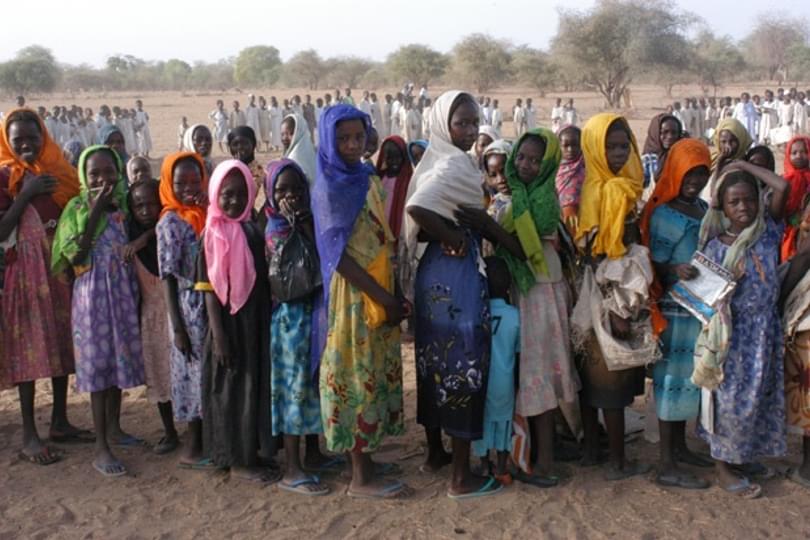
The idea that there has been a shift in migration gender ratios causing a feminisation of migration flows that has characterised a new period of migration, has been widely proclaimed by scholars over the past two decades. I would argue that what has actually occurred has been a feminisation of the scientific interest in the issue of gender and migration, more than a feminisation of migration flows. The absence of women within historic migration data is more due to the invisibility of women in research before the 1980s than an indication that women were not migrating. This lack of empirical descriptive work on the gender composition of historical migration flows leaves this aspect of migration patterns under-researched.
Studies show that the percentage of female international migrants rose just two per cent from 1960–2000 (from 46.6% to 48.8%) (Zlotnik 2005).This modest increase does not seem proportionate to the exponential growth of literature on women and migration since the 1980s and has contributed to the misperception of an increasing feminisation of migration. Scholars are increasingly beginning to argue that women have always participated in migration and that there has been a previous invisibility of women in research where traditionally, migration scholarship only dealt with women ‘left behind’ by their migrant husbands.
But why have migrant women become so visible and how?
It has been in large part the result of feminist scholars arguing against the exclusion of women from migration studies. The first era of migration research during the seventies and eighties was characterised by the invisibility of women and/or gender perspective. The development of feminist research within migration studies has revealed that the invisibility of women has been due to the ‘gender blindness’ of researchers and the scarcity of quantitative sources where gender disaggregation was available. In cases where women were recorded, they were usually reported as being dependant on their husbands or parents, not leaving space to analyse individual trajectories or significant contributions to the economic sphere.
Some scholars argue that this problematic omission has been solved by the ‘add and stir’ approach and the ‘women only’ approach (Hondagneu-Sotelo 2005). The first has been a useful step to compare differential values – mainly quantitative – for men and women, but does not acknowledge that gender is about power relations and negotiations and cannot be understood by simply including women in the equation. The ‘women only’ approach develops deep portrayals of women’ lives but runs the risk of presenting a victimized image of immigrant women with limited capabilities to mobilize their resources (e.g. women as trafficked and exploited agents).
Migration studies in the late 1980s and early 1990s was characterized by the inclusion of new feminist approaches leading to the analysis of gender relation dimensions. Consequently, there has been a growth in the analysis of the gendering of migration patterns, as well as the intersection between migration trajectories, gender relations, ethnicity, class, etc. (Anthias, 2012). Despite this large body of scholarship, research offering consistent empirical measures on the feminisation of migration flows is scarce and usually the studies developed are focused on individual countries only. Empirical research on the evolution of gender composition of migration flows is needed to contribute to these debates.
As part of the DEMIG (The Determinants of International Migration) project, a Country-to-Country Database (DEMIG C2C Database) was developed and has achieved more ‘depth and breadth’ of migration flow data compared with existing databases. The database contains bilateral migration flow data from 1946 to 2010 reported by mainly OECD countries but extended to other regions (such as Latin America and Southern Africa), broken down by gender and citizenship, reported by country of birth, residence and citizenship according to availability.
The DEMIG C2C Database shows that migration flows were far from highly masculinized in the 1940s and 1950s and that there actually has not been a dramatic feminization of flows. For example, in OECD countries the percentage of women in annual inflows has reduced from an average of 49.2 per cent from 1946 to 1950 to 48.1 per cent between 2000 and 2010. Therefore, there has actually been a slight masculinization of average migration flows although, this might appear differently for particular regions and nationalities (e.g. the US, Southern European countries during the 1990s and for particular migration flows) and needs to be further explored.
The DEMIG C2C Database provides the opportunity to use data to analyse the gender composition of migration flows, something we need a lot more of. The DEMIG C2C Database will be launched to the public in late 2013, please visit http://www.imi.ox.ac.uk/research-projects/demigfor more information on the project.
- The DEMIG project and has received funding from the European Research Council under the European Community’s Seventh Framework Programme (FP7/2007-2013) / ERC Grant Agreement 240940
- More about the International Migration Institute
- Watch IMI's Dr Mathias Czaika, James Martin Fellow, International Migration Institute on 'Why do people migrate?'
This opinion piece reflects the views of the author, and does not necessarily reflect the position of the Oxford Martin School or the University of Oxford. Any errors or omissions are those of the author.
